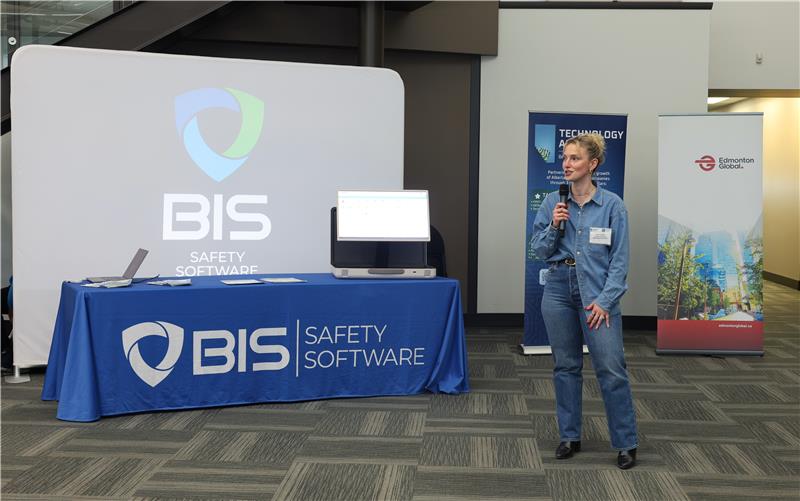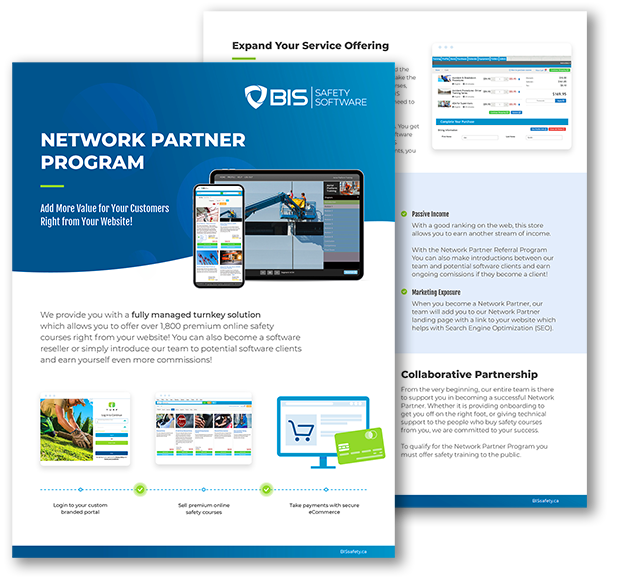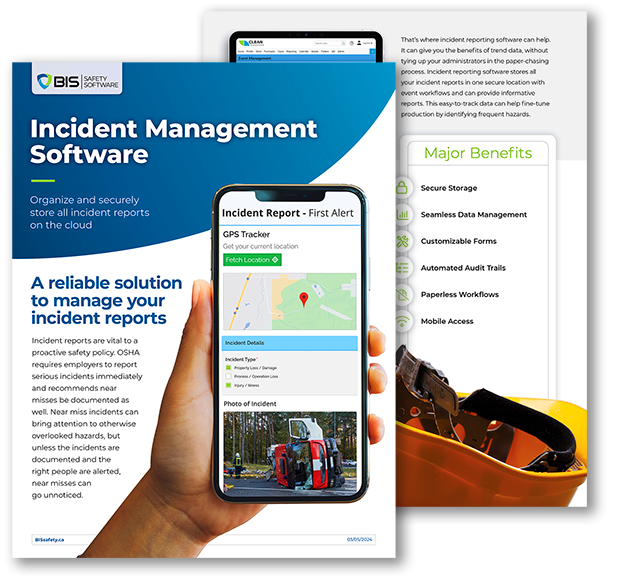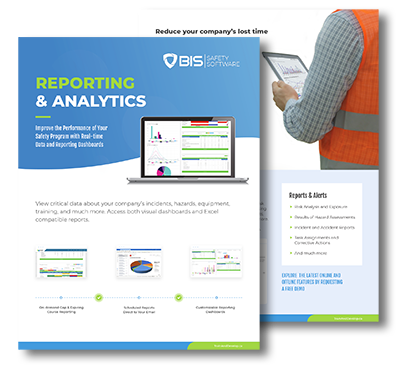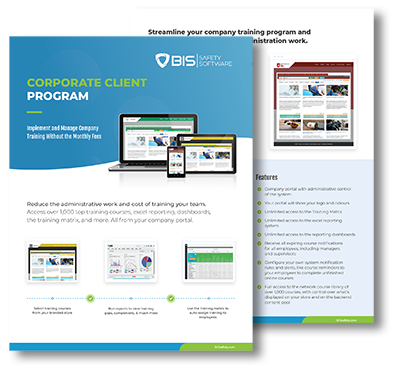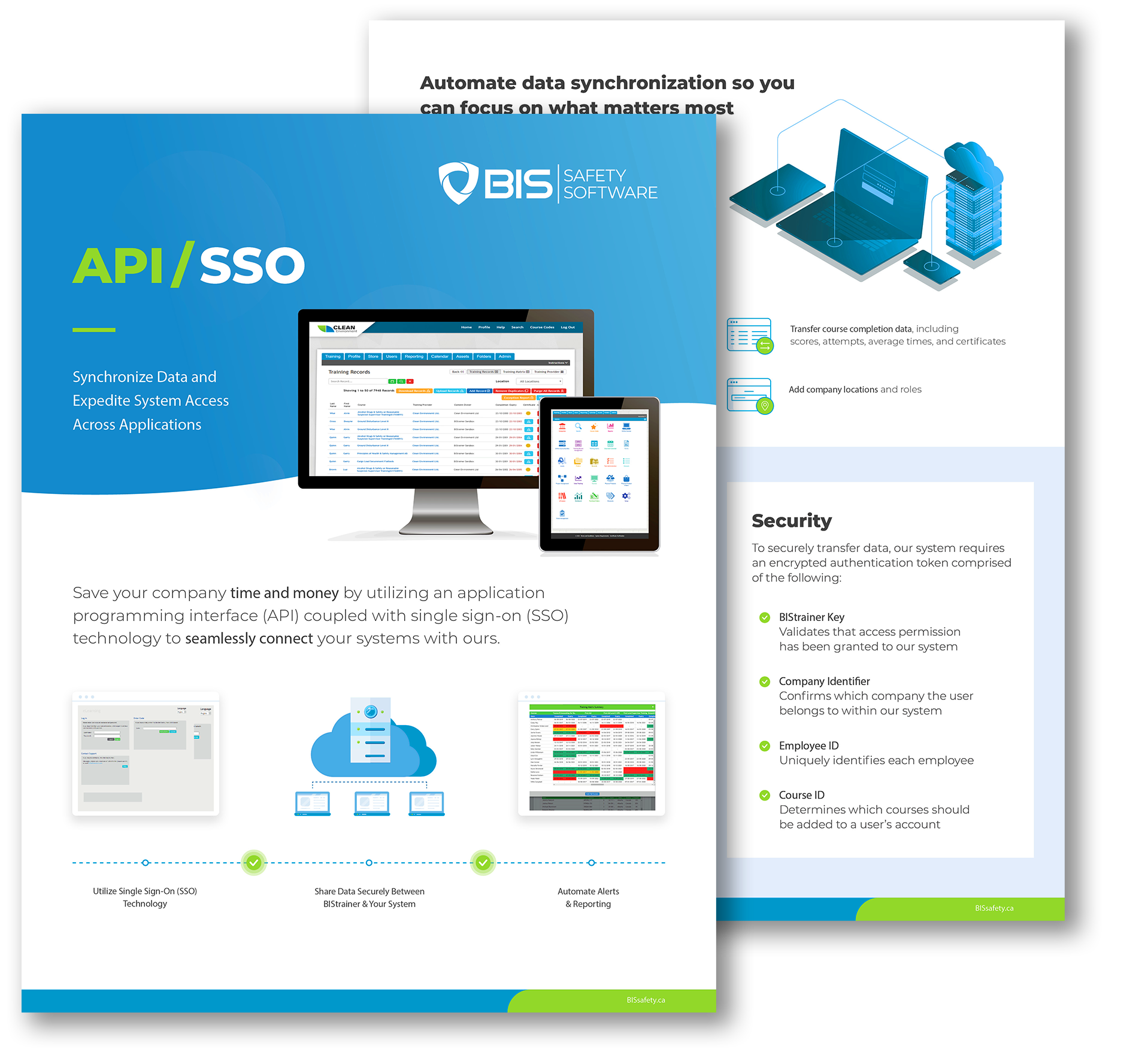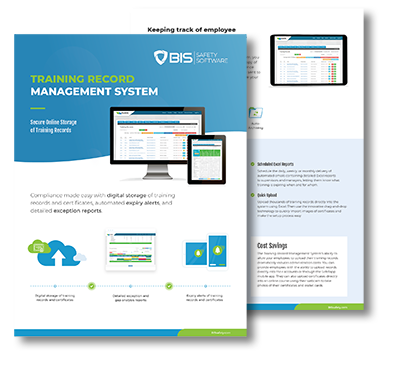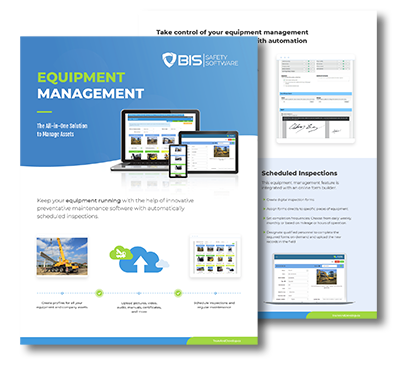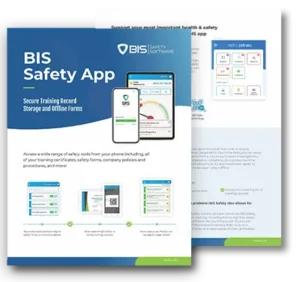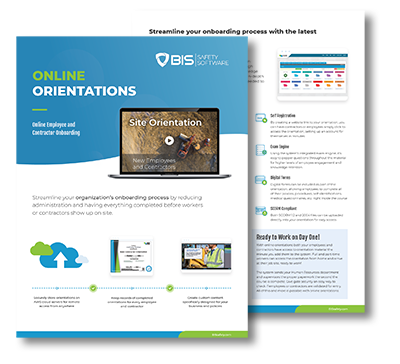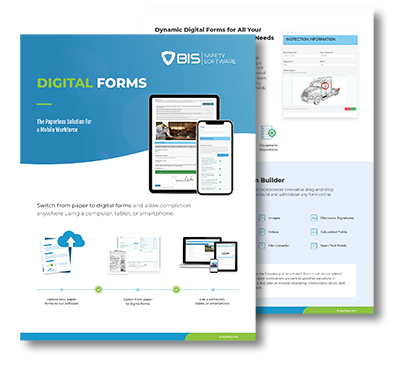Selecting an effective EHS risk management software can be challenging for safety managers. This guide will help you navigate the selection process by focusing on key features, assessing your organization’s needs, and evaluating software vendors.
You’ll learn how to choose a solution that enhances your hazard analysis capabilities, improves job safety analysis processes, and strengthens your overall EHS management system. By the end, you’ll be equipped to make an informed decision that aligns with your company‘s safety goals and streamlines your risk management efforts.
Understanding the Importance of EHS Risk Management Software
EHS risk management software plays a crucial role in modern businesses, offering significant benefits for environmental health and safety operations. This section explores how these systems address common challenges, leverage analytics for enterprise risk management, and adapt to industry trends. Companies integrating EHS software gain improved compliance, streamlined processes, and enhanced personal protective equipment management.
▸ The Role of EHS Software in Modern Businesses
EHS software solutions play a pivotal role in modern businesses by enhancing productivity and safety across various operations, including transport. These systems provide comprehensive dashboards that offer real-time insights into safety metrics, enabling quick identification and mitigation of potential hazards. By streamlining accident reporting and analysis, EHS software empowers organizations to proactively address safety concerns, reduce incidents, and maintain regulatory compliance.
▸ Benefits of Integrating EHS Systems Into Operations
Integrating EHS systems into operations provides numerous benefits for organizations seeking to enhance their operational risk management. These systems enable companies to streamline their compliance processes with regulatory bodies such as the Occupational Safety and Health Administration, ensuring adherence to industry standards and certifications. By centralizing data and automating reporting, EHS software improves efficiency, reduces human error, and allows for more effective tracking of safety metrics and incidents. This proactive approach to occupational safety not only minimizes potential hazards but also contributes to a stronger safety culture within the organization.
▸ Common Challenges Without Proper EHS Tools
Organizations without proper EHS tools face significant challenges in managing environmental issues and maintaining regulatory compliance. Risk management software becomes essential for handling complex data related to workplace safety, environmental impacts, and property protection. Without these specialized tools, companies struggle to efficiently track incidents, analyze trends, and implement proactive safety measures, potentially leading to increased liability and compromised employee well-being.
▸ Industry Trends Driving EHS Software Adoption
The adoption of EHS risk management software is driven by several industry trends, including the increasing focus on workplace safety and the need for improved governance structures. As organizations face heightened scrutiny regarding their environmental impact and employee well-being, these software solutions offer comprehensive tools to manage hazards, prevent injuries, and ensure regulatory compliance. The shift towards data-driven decision-making in safety management has also accelerated the implementation of EHS software, enabling companies to analyze trends, predict potential risks, and develop proactive strategies to mitigate them effectively.
The importance of EHS risk management software is clear. Now, let’s examine the essential features that make these solutions effective.
Key Features to Look for in EHS Risk Management Solutions
Selecting the right EHS risk management software requires understanding key features crucial for effective safety management. This section examines comprehensive risk assessment tools, compliance management capabilities, incident reporting functions, user-friendly interfaces, and system integration. These elements are essential for laboratories, liability insurance, and employee training, ensuring a robust EHS software solution that meets organizational needs.
1. Comprehensive Risk Assessment Tools
Effective EHS risk management software incorporates comprehensive risk assessment tools that enable organizations to identify, evaluate, and mitigate potential hazards across various domains, including waste management and dangerous goods handling. These tools typically feature customizable checklists and assessment frameworks aligned with occupational safety and health standards, allowing companies to develop a robust strategy for risk mitigation. Advanced solutions may also include predictive analytics capabilities, empowering safety managers to anticipate and prevent potential incidents before they occur.
2. Compliance Management Capabilities
Robust compliance management capabilities are essential in EHS risk management software, enabling organizations to navigate complex regulatory landscapes effectively. These features typically include automated tracking of regulatory changes, customizable compliance calendars, and integrated process safety management systems. Advanced solutions may incorporate engineering controls and emergency response protocols, ensuring comprehensive coverage of occupational hygiene and safety requirements. By centralizing compliance data and streamlining reporting processes, these systems empower safety managers to maintain regulatory adherence and minimize the risk of non-compliance penalties.
3. Incident Reporting and Analysis Functions
Effective EHS risk management software includes robust incident reporting and analysis functions, essential for managing risks in various industries, including construction and asbestos abatement. These features enable organizations to document, investigate, and analyze incidents, near-misses, and hazardous conditions, aligning with ISO 45001 standards for occupational health and safety management systems. Advanced software solutions offer customizable reporting templates, automated notification systems, and root cause analysis tools, facilitating comprehensive incident investigations and promoting a proactive approach to risk mitigation and regulatory compliance.
4. User-Friendly Interface and Accessibility
A user-friendly interface and accessibility are crucial features for EHS risk management software, enhancing its effectiveness in managing occupational hygiene and environmental remediation tasks. Intuitive design and easy navigation allow safety managers to quickly access critical information, improving response times to potential risks and maintaining the organization’s reputation. Advanced solutions often incorporate mobile compatibility, enabling field workers to report incidents or access safety protocols on-site, while also facilitating seamless communication between insurance providers and safety teams for efficient risk assessment and mitigation.
5. Integration With Existing Systems
Integration with existing systems is a critical feature of effective EHS risk management software. These solutions should seamlessly connect with an organization’s current information systems, including resource planning and workplace safety platforms. By integrating with existing infrastructure, EHS software enhances data flow, streamlines evaluation processes, and improves waste management efficiency. This interconnectivity allows safety managers to access comprehensive, real-time information across various departments, facilitating more informed decision-making and proactive risk mitigation strategies.
EHS risk management features matter, but your needs matter more. Let’s explore how to match the right solution to your organization.
Assessing Your Organization’s Specific Needs
Assessing organizational needs is crucial when selecting EHS risk management software. This section explores identifying critical industry risks, determining software requirements, engaging stakeholders, and setting performance goals. By focusing on health, risk assessment, and management, organizations can develop a strong safety culture and implement effective engineering controls to enhance their EHS performance.
1. Identifying Critical EHS Risks in Your Industry
Identifying critical EHS risks in an industry requires a comprehensive assessment of business operations, process safety measures, and workforce dynamics. Organizations must evaluate potential hazards specific to their sector, considering factors such as chemical exposures, equipment safety, and environmental impacts. This process involves analyzing historical incident data, conducting thorough risk assessments, and engaging employees at all levels to foster a culture of safety awareness and proactive risk management.
2. Determining Essential Software Requirements
Determining essential software requirements involves a thorough audit of an organization’s EHS processes, sustainability goals, and environmental protection measures. Safety managers must identify key functionalities that align with their company’s administrative controls and industry best practices. This assessment should consider factors such as data management capabilities, reporting tools, and integration with existing systems to ensure the chosen software enhances overall EHS performance and supports continuous improvement initiatives.
3. Engaging Stakeholders in the Selection Process
Engaging stakeholders in the selection process of EHS risk management software ensures alignment with organizational needs and promotes adoption across departments. Safety managers should involve key personnel from various teams, including operations, IT, and finance, to gather diverse perspectives on workflow requirements and technology preferences. This collaborative approach helps identify critical features for inspection processes, asset management, and risk mitigation strategies, ultimately leading to a more effective implementation of the chosen software solution.
4. Setting Goals for EHS Performance Improvement
Setting goals for EHS performance improvement is a critical step in implementing effective risk management software. Organizations should establish clear, measurable objectives that align with their overall EHS policy and strategic vision. These goals may include reducing incident rates, improving compliance scores, or enhancing environmental sustainability metrics. By defining specific targets, safety managers can better evaluate the success of their EHS initiatives and identify areas for continuous improvement in their risk management strategies.
With your needs assessed, it’s time to look outward. The market offers many options, but finding the right fit demands careful evaluation.

Evaluating and Comparing Software Vendors
Evaluating and comparing EHS software vendors is crucial for selecting the right risk management solution. This section explores researching providers, requesting demonstrations, analyzing costs, reviewing testimonials, and considering vendor reliability. These steps help organizations make informed decisions, ensuring the chosen software aligns with their specific EHS needs and objectives.
1. Researching Leading EHS Software Providers
Researching leading EHS software providers involves a comprehensive evaluation of their product offerings, industry expertise, and client satisfaction rates. Safety managers should examine vendors’ track records in developing solutions that address specific environmental health and safety challenges, such as hazard identification and risk assessment. It is crucial to assess the providers’ commitment to innovation and their ability to adapt to evolving regulatory requirements, ensuring the selected software remains effective in managing EHS risks long-term.
2. Requesting Demonstrations and Trial Access
Requesting demonstrations and trial access is a crucial step in evaluating EHS risk management software. Safety managers should schedule live demonstrations with shortlisted vendors to assess the software‘s user interface, functionality, and relevance to their organization’s needs. Many providers offer trial periods, allowing teams to test the software in real-world scenarios and evaluate its performance in managing safety incidents, conducting risk assessments, and generating compliance reports.
3. Analyzing Cost and Value Proposition
Analyzing the cost and value proposition of EHS risk management software requires a thorough evaluation of both upfront expenses and long-term benefits. Safety managers should consider factors such as licensing fees, implementation costs, and potential return on investment through improved compliance and reduced incidents. It is essential to weigh these financial aspects against the software‘s capabilities in addressing specific organizational needs, such as streamlining incident reporting processes or enhancing data analysis for risk prevention.
4. Reviewing Customer Testimonials and Case Studies
Reviewing customer testimonials and case studies provides valuable insights into the real-world performance of EHS risk management software. Safety managers should examine these resources to understand how different solutions have addressed challenges similar to their own, paying attention to quantifiable results such as incident reduction rates or compliance improvement. Case studies offer detailed examples of implementation processes and outcomes, helping organizations gauge the potential impact of a software solution on their EHS practices.
5. Considering Vendor Reliability and Support Services
Considering vendor reliability and support services is crucial when selecting EHS risk management software. Organizations should evaluate the vendor’s track record for system uptime, data security, and timely updates to ensure consistent performance. Responsive customer support, including technical assistance and training resources, plays a vital role in maximizing the software‘s effectiveness. Safety managers should also assess the vendor’s long-term viability and commitment to ongoing product development to ensure the chosen solution remains relevant and compliant with evolving industry standards.
You’ve chosen your software. Now comes the real challenge: implementation. Let’s dive into making your EHS software work for you.
Implementing EHS Software for Optimal Results
Implementing EHS software effectively requires a strategic approach. This section covers deployment planning, team training, software customization, performance monitoring, and addressing transition challenges. By focusing on these key areas, organizations can optimize their EHS risk management software implementation, ensuring successful adoption and maximizing the benefits of their chosen solution.
▸ Planning an Effective Deployment Strategy
Planning an effective deployment strategy for EHS risk management software requires a comprehensive approach that considers organizational structure, current processes, and future goals. Safety managers should outline a phased implementation plan, starting with critical modules and gradually expanding to cover all aspects of EHS operations. This strategy should include clear timelines, resource allocation, and key performance indicators to measure success at each stage of deployment.
▸ Training Your Team for Successful Adoption
Training teams for successful adoption of EHS risk management software is crucial for maximizing its benefits. Organizations should develop comprehensive training programs that cover software functionality, data input procedures, and report generation. These programs should be tailored to different user roles, ensuring that employees understand how the software applies to their specific responsibilities. Hands-on training sessions, supplemented by user manuals and online resources, can help staff become proficient in utilizing the software‘s features effectively.
▸ Customizing the Software to Fit Your Processes
Customizing EHS risk management software to fit organizational processes ensures optimal alignment with existing workflows and reporting requirements. Safety managers should work closely with software providers to tailor features such as data fields, risk assessment matrices, and reporting templates to match their specific needs. This customization extends to integrating the software with existing systems, such as human resources or asset management platforms, to create a seamless flow of information across the organization.
▸ Monitoring Performance and User Feedback
Monitoring performance and user feedback is essential for the successful implementation of EHS risk management software. Organizations should establish key performance indicators to track the software‘s impact on safety metrics, compliance rates, and operational efficiency. Regular surveys and feedback sessions with users across different departments can provide valuable insights into the software‘s usability and effectiveness in real-world scenarios, allowing for continuous improvement and optimization of the system.
▸ Addressing Challenges During Transition
Addressing challenges during the transition to new EHS risk management software requires proactive planning and flexibility. Organizations often face resistance to change, data migration issues, and temporary productivity dips during implementation. Safety managers should anticipate these obstacles by developing contingency plans, providing additional support to users, and maintaining open communication channels. Regular check-ins and progress assessments help identify and resolve issues quickly, ensuring a smoother transition and faster realization of the software‘s benefits.
Implementation complete, the real work begins. Success demands ongoing effort and adaptation.
Ensuring Long-Term Success With EHS Software
Ensuring long-term success with EHS software requires ongoing commitment and adaptation. This section explores strategies for staying current with regulations, continuous training, performance measurement, data-driven decision-making, and cultivating a safety-focused culture. By addressing these key areas, organizations can maximize the benefits of their EHS risk management software and maintain effective safety practices over time.
▸ Case Study: Keeping Up With Regulatory Changes
Keeping up with regulatory changes is essential for long-term success with EHS risk management software. Organizations must regularly update their software to reflect the latest environmental, health, and safety regulations. This involves setting up automated alerts for new legislation, integrating regulatory databases, and ensuring the software can quickly adapt to new compliance requirements. By maintaining an up-to-date system, companies can avoid penalties, protect their reputation, and maintain a proactive approach to risk management.
▸ Ongoing Training and Skill Development
Ongoing training and skill development are crucial for maintaining the effectiveness of EHS risk management software. Organizations should implement regular training sessions to keep employees updated on new features, best practices, and regulatory changes. These sessions can include hands-on workshops, webinars, and e-learning modules tailored to different user roles. By fostering a culture of continuous learning, companies ensure that their staff can fully leverage the software‘s capabilities, leading to improved risk management and safety outcomes.
▸ Measuring Improvements in EHS Performance
Measuring improvements in EHS performance is essential for validating the effectiveness of risk management software and guiding future strategies. Organizations should establish key performance indicators (KPIs) that align with their EHS goals, such as incident rates, compliance scores, and environmental impact metrics. Regular analysis of these KPIs, facilitated by the software‘s reporting tools, allows safety managers to identify trends, assess the impact of implemented measures, and make data-driven decisions for continuous improvement.
▸ Utilizing Analytics for Decision-Making
Utilizing analytics for decision-making is crucial for maximizing the value of EHS risk management software. Organizations can leverage data-driven insights to identify trends, predict potential risks, and implement proactive safety measures. By analyzing historical data and real-time information, safety managers can make informed decisions about resource allocation, training needs, and process improvements. This approach enables companies to continuously refine their EHS strategies, ultimately leading to safer work environments and more efficient operations.
▸ Fostering a Culture of Safety and Compliance
Fostering a culture of safety and compliance is essential for the long-term success of EHS risk management software implementation. Organizations should integrate safety values into their core mission, encourage open communication about potential hazards, and recognize employees for their contributions to workplace safety. By consistently reinforcing safety protocols through regular meetings, training sessions, and visible leadership commitment, companies can create an environment where safety becomes second nature to all employees.

Conclusion
Selecting the right EHS risk management software is crucial for organizations to effectively manage environmental, health, and safety risks while ensuring regulatory compliance. By carefully assessing organizational needs, evaluating key features, and engaging stakeholders in the selection process, companies can implement a solution that streamlines operations, improves safety performance, and drives continuous improvement. Successful implementation requires thorough planning, comprehensive training, and ongoing monitoring to maximize the software‘s benefits and foster a culture of safety. Ultimately, investing in the right EHS risk management software empowers organizations to proactively address safety challenges, reduce incidents, and maintain a competitive edge in today’s safety-conscious business environment.
Related Articles
- All Posts
- #EmergencyPreparedness
- 2025 safety trends
- 360 Immersive
- 360immersive
- 6S Safety
- accident prevention
- accidental careers
- accountability
- adjustable workstations
- adult education
- AI automation
- AI implementation
- AI in business
- AI in operations
- AI in Safety
- AI podcast
- AI strategy
- AI transformation
- Alberta safety courses
- Allan James Moore
- artificial intelligence
- asking for help
- audit findings
- audit readiness
- Audit Reporting
- automation in safety
- automation strategy
- avoidable injuries
- awareness
- Aztec Safety
- back strain
- BambooHR integration
- Bear safety
- behavior-based safety
- Behavioral Safety
- behavioural safety
- biometric sensors
- BIS Podcast
- BIS Safety Podcasts
- BIS Safety Software
- BIS Safety Spotlight
- black holes
- Blame Culture
- Blue Angels
- BP Texas City Explosion
- Brave Leadership
- Brett Burkard
- burnout
- business automation
- call before you dig
- Canadian OHS
- Canadian safety
- Canadian safety history
- Canadian safety standards
- Canadian wilderness safety
- carbon monoxide
- Carolynne Heron
- CCOHS
- chemical
- chemical vapors
- chronic injuries
- chronic pain
- cloud-based safety tools
- Coming Soon
- community safety programs
- Competency in Safety
- complacency in safety
- Compliance
- compliance courses
- Compliance In Canada
- compliance issues
- Compliance management
- Compliance Reporting
- compliance software
- compliance tools
- compliance tracking
- compliance training
- compliance vs protection
- Construction advocacy
- Construction education
- Construction industry
- construction safety
- construction safety training
- construction technology
- continuous improvement
- continuous safety improvement
- corporate culture
- corporate training
- corrective actions
- crane
- CSA standards
- Customer Spotlight
- Customer Spotlight Kevin Swinden Global Hazmat Safety Culture Hazmat Management Dangerous Goods Competency in Safety Workplace Risk Mitigation BIS Training Clients Canadian EHS
- customized training
- daily trip inspection
- Damage Prevention
- Dangerous Goods
- dangerous goods classification
- Danny Sellers
- data-driven safety
- debriefing
- Decision Analysis
- defect management
- defect tracking
- defensive driving
- DEI in onboarding
- digital badges
- digital compliance
- digital FLHA
- digital forms
- Digital Hazard Reporting
- Digital Onboarding
- digital safety
- Digital Safety Audits
- digital safety meetings
- Digital safety systems
- digital safety tools
- digital safety transformation
- digital site access
- Digital Training Tools
- digital transformation
- DMS features
- document control
- document management system
- Dr. Joanna Pagonis
- Dr. Tom Krause
- driver file management
- driver training
- driving instructor program
- DTRMS
- e-learning
- e-learning tools
- eadership in safety
- early intervention
- education technology
- EHS
- EHS Adoption
- EHS Compliance
- EHS digital solutions
- EHS Inspections
- EHS Onboarding
- EHS software
- EHS systems
- EHS technology
- EHS tools
- Einstein
- electrical safety
- elite performance
- Emergency Action Plan
- emergency preparedness
- emergency procedures
- emergency response
- emergency supplies
- emotional training
- employee behavior
- employee engagement
- employee health
- Employee onboarding
- Employee Readiness
- employee safety
- employee training
- employee trust
- Energy Isolation
- engaging toolbox meetings
- equipment inspections
- ergonomic consulting
- ergonomic design
- ergonomic risks
- ergonomics
- Evacuation Procedures
- evidence collection
- EWI Works
- excavator safety essentials
- exoskeleton
- exoskeletons
- failure analysis
- fall prevention
- fall protection
- fast onboarding
- field experience
- field level hazard assessments
- field operations
- field safety
- field safety assessments
- field safety communication
- field safety leadership
- field safety services
- Field Safety Technology
- field safety tools
- Field-Friendly Software
- Fire Drills
- fire prevention
- Fire Safety Training
- first aid kit
- first week on the job
- first workplace injury
- fleet management
- fleet safety
- FLHA engagement
- FLHA Integration
- FLHA software
- FMEA
- freight
- Frontline Engagement
- frontline safety
- fuel handling
- future of work
- Gas Safety
- Global Hazmat
- global onboarding
- gravitational waves
- gut feeling in safety
- hand injuries
- handling hazardous materials
- hands-on training
- hazard analysis
- hazard assessment compliance
- hazard assessment software
- Hazard Awareness
- hazard communication
- Hazard Identification
- hazard prevention
- hazard recognition
- hazard reporting
- hazard reporting technology
- hazard tracking
- Hazardous Energy Control
- Hazmat Management
- Health & Safety Podcast
- health and safety
- hearing loss prevention
- hearing protection
- heavy equipment operation
- heavy equipment safety
- hidden workplace hazards
- high voltage systems
- HR automation
- HR software
- HR technology
- human factors
- human factors in safety
- human in the loop
- Human Performance
- human vs machine
- human-centered design
- human-centered safety
- humor in safety
- ICBC certification
- identification
- immersive learning
- Imposter Syndrome
- incident data
- incident investigation
- incident management
- incident prevention
- incident reporting
- inclusive leadership
- industrial AI
- Industrial Hygiene
- industrial safety
- influence vs control
- Infrastructure Risk
- injury consequences
- injury prevention
- injury prevention tips
- injury recovery
- injury reporting
- injury response
- injury response plan
- instant hazard logging
- instructor development
- internal audits
- international workforce
- interpreting safety data
- invisible dangers
- ISO standards
- Jeff Mulligan
- Jennifer Lastra
- job site accountability
- job site hazards
- job site risks
- job site safety
- jobsite readiness
- Jody Young
- KBR Safety Training
- Kevin Swinden
- labor movement
- ladder safety
- Leadership
- leadership accountability
- leadership and empathy
- Leadership in Safety
- Leadership Management
- leadership messaging
- Lean Manufacturing
- Lean Workplace
- learning from incidents
- learning management
- lifting techniques
- LIGO
- Linda Miller
- LMS
- LMS features
- LMS software
- Lock Out Tag Out
- lockout tagout
- lone workers
- LOTO
- machine learning
- Machine Safety
- Maintenance Safety
- mental health at work
- MI Safety
- microlearning
- Mike Schwartz
- minor injuries
- mobile FLHA solution
- mobile onboarding
- Mobile Safety Apps
- Mobile Safety Platforms
- mobile safety reporting
- Mobile Safety Tools
- mobile safety tools safety compliance solutions
- mould hazards
- mould prevention
- movement in workplace
- multilingual training
- MyZone AI
- Near Miss Reporting
- new hire experience
- New Hire Safety
- New Worker Training
- new workers
- no-blame investigations
- noise exposure
- nonconformance
- Northern BC
- NRCA
- NSC Standard 13
- occupational fatigue
- occupational hazards
- occupational health
- occupational health risks
- occupational safety
- occupational therapy
- OH&S
- OHS
- OHSA
- oil and gas safety
- omni-training
- onboarding Canada
- onboarding safety
- Onboarding Software
- online learning
- online orientation software
- Online safety training
- operational efficiency
- Operational Excellence
- organizational culture
- organizational safety
- OSHA compliance
- OSHA standards
- outdated practices
- Outdoor work hazards
- overconfidence
- overhead crane courses
- pain awareness
- paperless safety reporting
- paperless safety talks
- personal protective equipment
- Pharmaceutical Safety
- physics careers
- pipeline safety
- playbook software
- podcast
- post-accident review
- post-incident protocol
- PPE
- PPE enforcement
- PPE improvement
- pre-trip inspection
- predictive analytics
- pretrip inspection
- preventing shortcuts
- preventive action
- proactive risk management
- proactive safety
- proactive safety culture
- proactive safety measures.
- Proactive Safety Systems
- process improvement
- Professional development
- propane safety
- propane storage
- protective clothing
- psychological hazards
- psychological safety
- quality control
- quality management
- quality standard
- Real Safety Leadership
- real-time hazard reporting
- Real-Time Reporting
- real-time safety
- real-time safety tools
- real-time site data
- recordkeeping
- reduce training costs
- regulatory updates
- repetition in safety
- repetitive motion injuries
- respirator safety
- respirators
- risk assessment
- risk management
- risk mitigation
- risk prevention
- Risk Prevention Tools
- risk reduction
- road safety
- Robin Postnikoff
- ROI with AI
- root cause analysis
- root cause correction
- routine task risks
- safe excavation
- safe habits
- safe transport
- safe work habits
- safe work practices
- safety
- safety accountability
- safety advice
- safety article
- Safety Audit Software
- safety automation
- safety awareness
- safety best practices
- safety communication
- safety compliance
- Safety Conversations
- safety culture
- safety data
- safety data sheets
- safety documentation
- safety engagement
- safety follow-up
- safety gear
- safety gloves
- safety goggles
- safety habits
- safety improvement
- safety incentives
- safety innovation
- safety insights
- safety inspection
- safety instinct
- Safety Leaders
- safety leadership
- Safety Leadership Podcast
- safety legislation
- safety lessons
- safety management
- safety management system
- safety management systems
- safety metrics
- safety mindset
- safety motivation.
- safety myths
- safety onboarding
- safety planning
- safety podcast
- safety procedure updates
- Safety Procedures
- safety process improvement
- safety professionals
- safety reporting
- safety review process
- safety shortcuts
- safety software
- Safety Spotlight
- safety systems
- safety technology
- safety theater
- safety tips
- safety tools
- safety training
- safety transformation
- safety transparency
- Sarah Anderson
- scaffold safety
- scaffolding inspections
- scalable training solutions
- Scott Lyall
- shipping documentation
- silent dangers
- silica dust
- Sinogap Solutions
- slow-building hazards
- smart helmets
- smart PPE
- smart safety systems
- smart safety tools
- SOPs
- space science
- Spencer McDonald
- Standardized Work
- stop work authority
- storytelling and safety
- storytelling in safety
- supervisor training
- system safety
- Systems Thinking in Safety
- tablet-based toolbox talks
- TDG
- team communication
- team performance
- teamwork
- tech and ergonomics
- tech in safety
- tech-enabled learning
- Thinking Driver
- Titan Environmental
- toolbox talks tablets
- Total Recordable Injury Formula
- tough guy mentality
- toxic air
- training
- training courses
- Training integration
- training management
- training matrix
- training record management
- training records
- training software
- transportation
- transportation of dangerous goods
- trust
- Trust and Accountability
- trust at work
- underground utilities
- unseen workplace threats
- user experience
- utility line marking
- utility locating
- Utility Safety Partners
- values-based onboarding
- vehicle safety
- version control
- veteran advice
- Virtual Reality
- VR safety training
- VR Technology
- wearable technology
- WHMIS
- Wildlife awareness
- witness statements
- women in leadership
- work-alone training
- work-related injuries
- worker accountability
- worker advocacy
- worker fatigue
- worker protection
- worker safety
- worker safety habits
- worker safety tips
- worker trust
- worker wellbeing
- workers' rights
- Workforce Automation
- workforce compliance
- Workforce development
- workforce engagement
- workforce management
- Workforce Readiness
- workforce training
- workplace accidents
- workplace air quality
- workplace best practices
- workplace certification
- workplace compliance
- Workplace Culture
- workplace hazard prevention
- Workplace Hazard Tracking
- workplace hazards
- workplace health
- workplace incident response
- workplace injuries
- workplace injury prevention
- workplace inspections
- workplace leadership
- workplace mindset
- Workplace Organization
- workplace risk factors
- workplace risk management
- Workplace Risk Mitigation
- Workplace safety
- workplace safety culture
- Workplace Safety Leadership
- workplace safety rules
- workplace safety tech
- workplace safety tips
- Workplace Safety Tools
- workplace safety training
- workplace stress
- workplace tiredness
- workplace wellness
- WSPS

Invisible and unpredictable, gases can pose serious risks in any work environment. Learn why understanding gas behaviour is critical for...

Learn how daily pre-trip inspections boost fleet safety in Canada, ensuring compliance, preventing accidents, and reducing costly downtime.

Lisa Rantucci started her career in safety with a single question: ‘Can I join your team? In her early twenties,...









